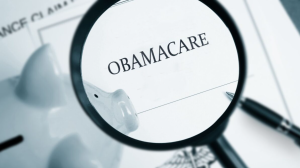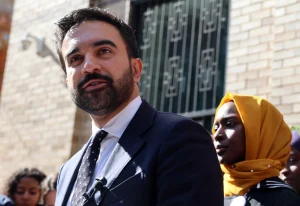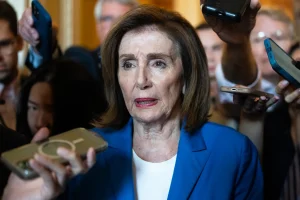Pressure Mounts Over SNAP Funding Freeze
A major development has shaken Washington as the U.S. Supreme Court temporarily blocked a lower court’s order requiring the federal government to issue full food assistance payments during the ongoing government shutdown. The move, which arrived late Friday, adds new uncertainty for millions of Americans relying on the Supplemental Nutrition Assistance Program (SNAP).
The order — issued by Justice Ketanji Brown Jackson — pauses a federal judge’s decision from Rhode Island that had compelled the Trump administration to use emergency reserves to distribute full November benefits. The Supreme Court’s intervention now allows the administration to proceed with its plan for partial SNAP payments while broader legal and political battles continue.
Officials say the ruling will remain in effect until the First Circuit Court of Appeals determines whether a longer suspension should be imposed, likely in the coming days.
States Rush To Act Before Ruling Hits
Before the high court’s decision arrived, several states had already scrambled to process full benefits based on the earlier court order. Wisconsin, Oregon, and Hawaii were among the first to move, with officials citing the urgency of keeping families fed amid the prolonged shutdown.
In Wisconsin, Governor Tony Evers confirmed that over $104 million in assistance was sent to 337,000 households overnight. “We wanted to make sure families didn’t miss a meal,” a spokesperson said.
Oregon Governor Tina Kotek described similar efforts, noting that employees “worked through the night” to distribute payments before the freeze took effect. Meanwhile, Hawaiian officials said they “moved with haste,” anticipating that higher courts might intervene at any moment.
However, those rapid distributions immediately drew criticism from federal officials, who accused states of prematurely spending limited reserves. The administration’s legal team warned that such actions could create “irreversible financial consequences” if the order were later overturned.
A Clash Between Courts and Congress
At the heart of the controversy is a constitutional argument that has divided lawmakers and judges alike. The Trump administration maintains that only Congress has the power to allocate new funds for the SNAP program, asserting that the judiciary cannot compel the executive branch to spend money that has not been formally approved.
“The president is committed to reopening the government as soon as Democrats agree to extend funding,” a White House spokesperson said in a brief statement.
Solicitor General D. John Sauer took the argument further in an emergency appeal to the Supreme Court, claiming that the Rhode Island court’s injunction “makes a mockery of the separation of powers.” Sauer argued that allowing one branch to direct spending would set a “dangerous precedent” for future budget disputes.
The administration insists that, under current law, only partial payments can be drawn from the Department of Agriculture’s $4.65 billion contingency fund. Without congressional action, full benefits simply cannot be guaranteed.
Millions Left Waiting as Shutdown Deepens
SNAP currently supports around 42 million Americans, representing roughly one in eight residents nationwide. The ongoing government shutdown — now the longest in U.S. history — has already pushed many low-income families to rely more heavily on local food banks and charities.
Advocates for food security say the Supreme Court’s decision could push many struggling households over the edge. “Families are already choosing between rent and groceries,” said one nonprofit director in Pennsylvania. “Now, they may lose even that little safety net they had left.”
Several state agencies confirmed they have halted further processing of benefits until new guidance is issued. Those that already distributed full payments — including California, Washington, Kansas, and New Jersey — will not be required to claw back funds. Still, further distributions could be delayed until at least next week.
The Judge’s Original Ruling
The case stems from a decision by U.S. District Judge John J. McConnell Jr., who ruled Thursday that the administration’s plan to cut November benefits to 65% of their normal amount violated federal law.
In his sharply worded injunction, McConnell wrote that the government must use “all available resources,” including unspent child nutrition funds, to ensure full payments for SNAP recipients. He described the action as necessary to “prevent irreparable harm to millions of Americans who depend on this assistance to eat.”
That ruling triggered immediate appeals from the Trump administration, which argued that McConnell had overstepped judicial authority by directing federal spending decisions.
Divided Responses From Across the Aisle
Reaction to the Supreme Court’s intervention has been swift and deeply divided. Democrats accused the administration of prioritizing politics over people, while Republicans praised the decision as a necessary check on judicial overreach.
“This is about basic governance,” said one Democratic senator. “We’re talking about food on the table, not a political bargaining chip.”
Conservative lawmakers countered that the court’s decision preserves the constitutional balance. “The judiciary cannot write checks Congress hasn’t approved,” a Republican representative said. “That’s how democracy collapses into chaos.”
Political analysts note that the case could become a defining moment in the ongoing struggle between Congress, the courts, and the executive branch during the shutdown.
What Happens Next
The First Circuit Court of Appeals is expected to review the case early next week. Depending on its decision, the Supreme Court could revisit the matter quickly.
If the lower court’s injunction is reinstated, the administration might be forced to distribute full payments again, drawing further from emergency reserves. But if the stay remains, millions of Americans could continue receiving reduced assistance until Congress reaches a funding agreement.
For families already feeling the pinch, each passing day adds uncertainty. Food banks across major cities report surging demand, and community programs say their supplies are dwindling fast.
As one volunteer in New Jersey put it, “People aren’t asking for luxuries — they’re asking for dinner.”
Broader Implications for Federal Programs
Experts warn that the SNAP dispute could set a precedent for how essential services are managed during future shutdowns. Legal scholars point out that the courts rarely intervene in budget-related matters, leaving this case as a potential landmark for how far judicial authority extends in emergencies.
“It’s not just about food benefits,” said a constitutional law professor. “It’s about how power is divided when the government stops functioning.”
Until Congress acts, the future of the program — and millions of families — hangs in the balance.

James Jenkins is a celebrated Pulitzer Prize-winning author whose work has reshaped the way readers think about social justice and human rights in America. Raised in Atlanta, Georgia, James grew up in a community that instilled in him both resilience and a strong sense of responsibility toward others. After studying political science and creative writing at Howard University, he worked as a journalist covering civil rights issues before dedicating himself fully to fiction. His novels are known for their sharp, empathetic portraits of marginalized communities and for weaving personal stories with broader political realities. Jenkins’s breakout novel, Shadows of Freedom, won national acclaim for its unflinching look at systemic inequality, while his more recent works explore themes of identity, resilience, and the fight for dignity in the face of oppression. Beyond his novels, James is an active public speaker, lecturing at universities and participating in nonprofit initiatives that support literacy and community empowerment. He believes that storytelling is a way to preserve history and inspire change. When not writing, James enjoys jazz music, mentoring young writers, and traveling with his family to explore cultures and stories around the world.









